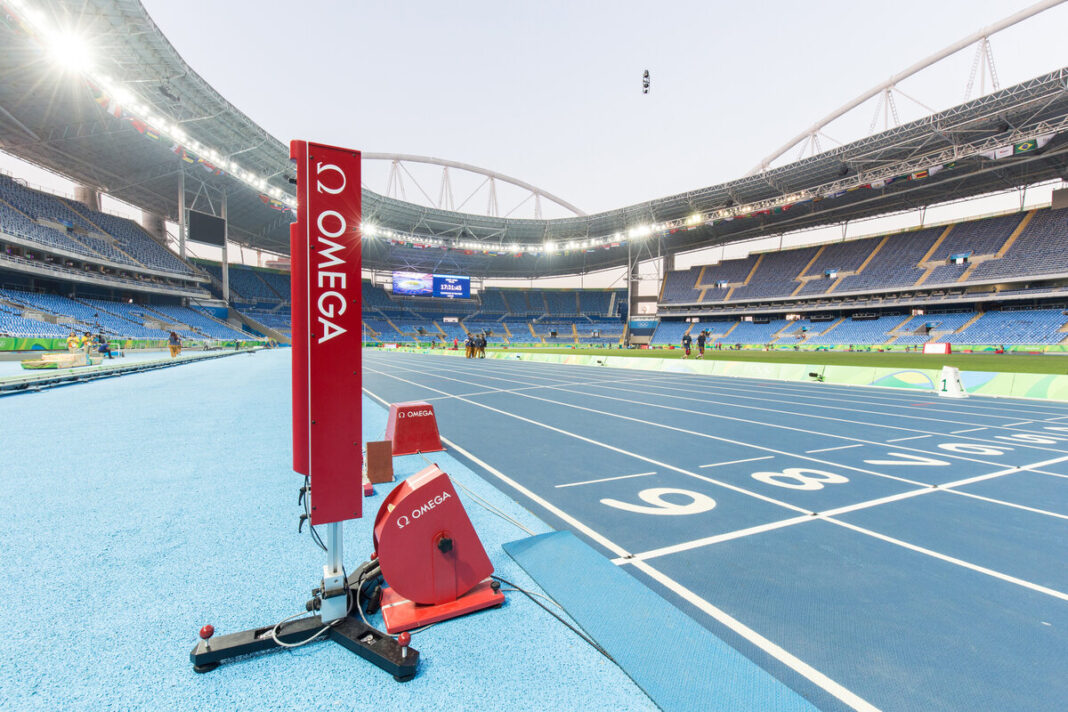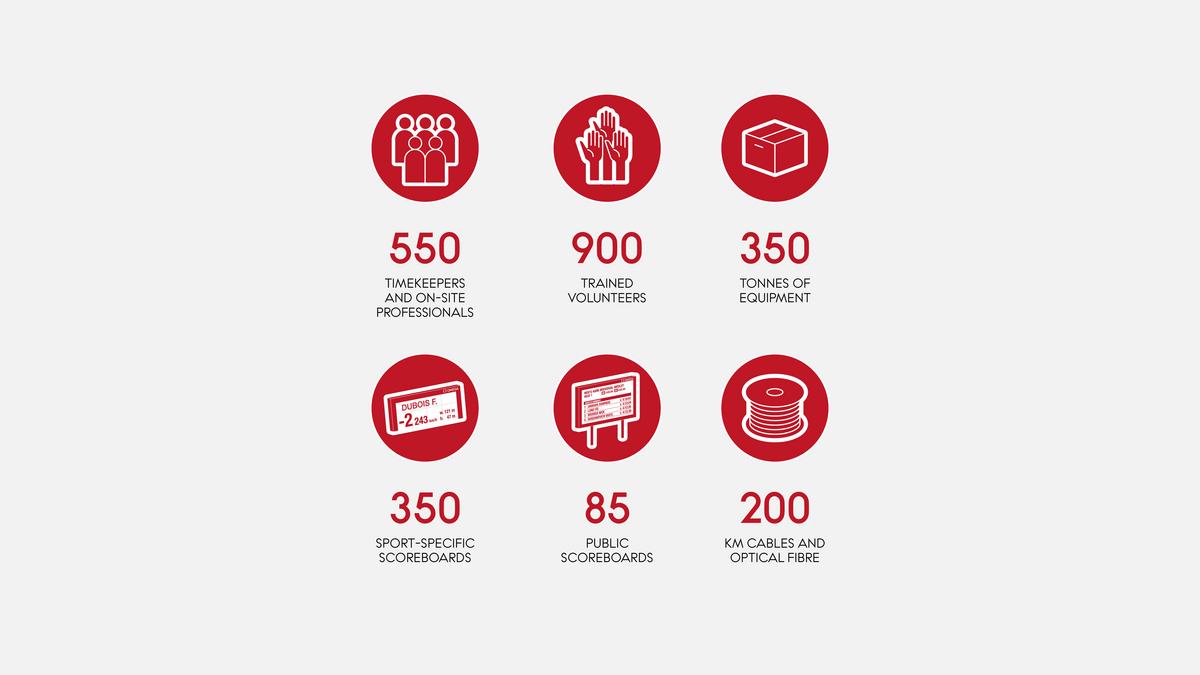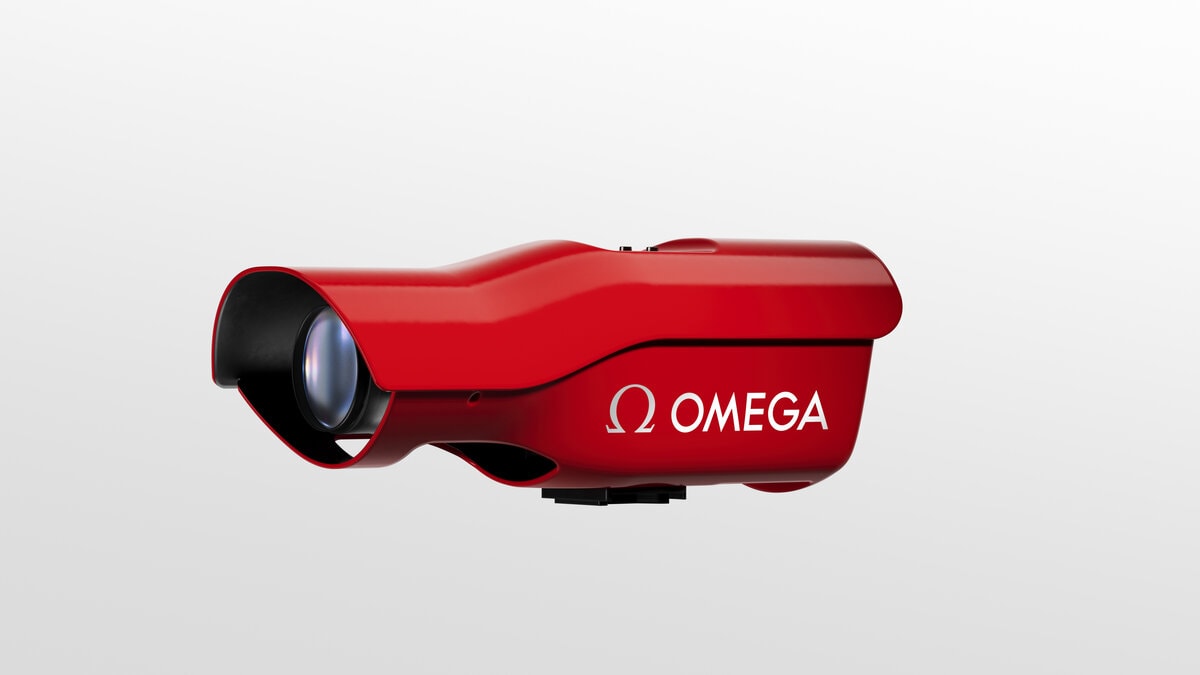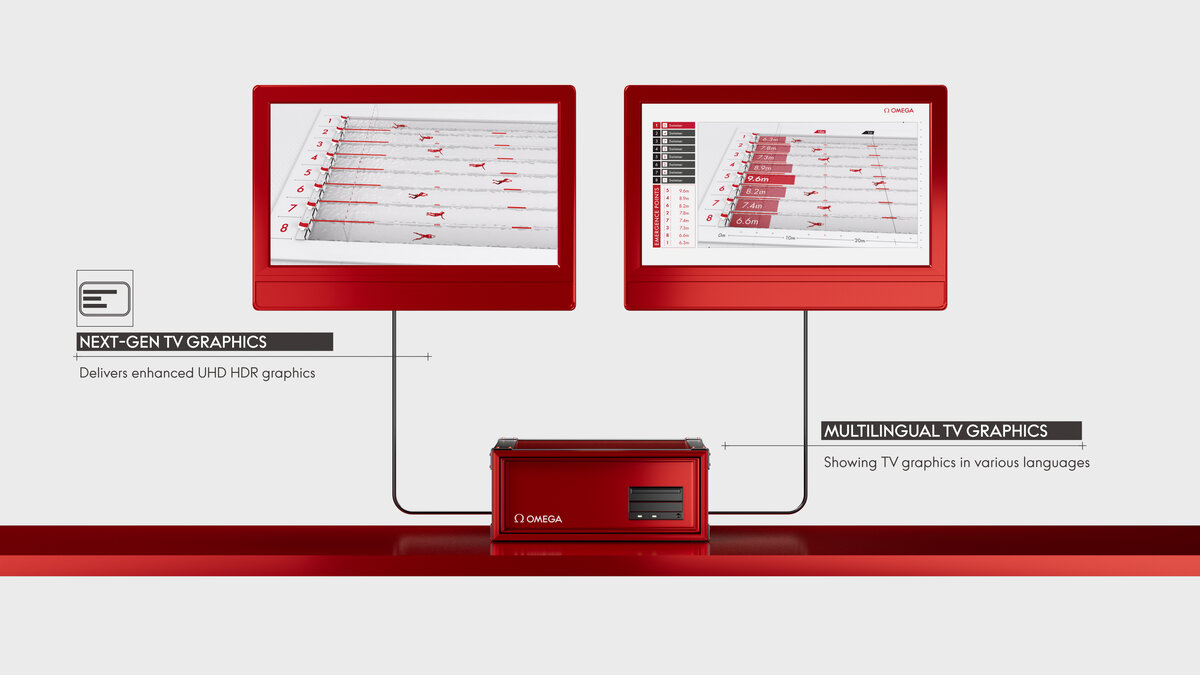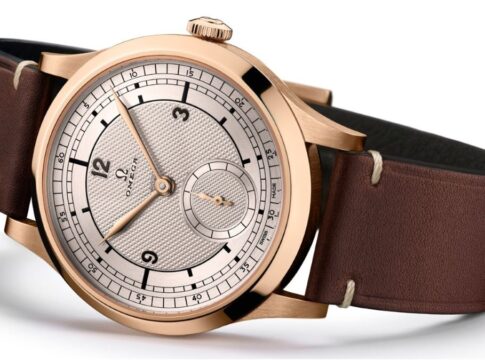The countdown is almost over, the athletes are ready, and the timers are set to begin. On July 26th, the Olympic Games Paris 2024 will ignite a summer of sporting action in the heart of the French capital.
For the 31st time since 1932, OMEGA will fulfil the role of Official Timekeeper, recording dreams in all 329 Olympic events across 32 sports. Overall, the Swiss brand brings more than 90 years of experience to its timekeeping role and will arrive in Paris with the most advanced technology it has ever delivered.
This will be followed by the Paralympic Games, beginning on August 28th, at which OMEGA’s experience and expertise will be required again. The brand has proudly timed this competition since 1992 using the same reliable equipment as the Olympic Games, along with many pieces of adapted technology.
At every edition of the Olympic Games, the motto of “faster, higher, stronger – together” certainly rings true. World Records are constantly being broken and the margins of victory are becoming slimmer by the split-second. For that reason, OMEGA is forever evolving and updating the equipment that athletes, judges, and spectators rely on.
Paris 2024 will highlight OMEGA’s next leap forward in the field of modern timekeeping. Raising the standards of precision and performance, the brand will not only measure the results that separate gold, silver, and bronze, but will also unleash a wave of in-depth data that shows exactly how each event is won or lost. Take your place on the start line – and prepare to witness the emotions, triumphs, and stories of this special moment in time.
Our History
There is no other watch company with the Olympic Games experience and timekeeping expertise of OMEGA. The brand’s legacy began in 1932, when for the first time in history, a single watch company was selected as the Official Timekeeper for every event. It was a defining moment in the history of sports measurement that set the course for an incredible future. OMEGA sent one watchmaker all the way from Bienne to Los Angeles, armed with 30 high-precision stopwatches that were accurate to the nearest 1/10th of a second.
This was followed in 1936 with the Olympic Winter Games in Garmisch-Partenkirchen, where OMEGA was again selected as Official Timekeeper, this time accepting the challenge of snowy events such as speed skating and alpine skiing.
From these first forays into timekeeping, it was clear that OMEGA excelled in precision, with reliable equipment and dedicated professionals who could fulfil the huge task required. It has now been 92 years since Los Angeles 1932. The reliability and trust of the IOC has remained constant throughout that time, yet the technology that OMEGA brings to the Olympic Games has been in continuous evolution.
While 1948 saw the arrival of the electronic era, with OMEGA’s first photofinish camera and photoelectric cells, there was more to come in 1956 and 1968, when the sport of swimming was revolutionized with semi-automated timers and the now-iconic touchpads. In athletics, devices such as starting blocks and false start detection have seen ongoing development and improvement since 1984.
Today, the modern era only proves how far OMEGA has come. Gone are the days of the stopwatch, now replaced by quartz-driven Quantum Timers, first introduced in 2012, that can split time by a millionth of a second. Since 2018, OMEGA has also been the leader in motion sensor and positioning systems, where every athlete’s performance can be measured from start to finish – revealing exactly how each event is won or lost.
Certainly, it has been a journey of ground-breaking technology alongside historic sporting moments. More than a duty, the Olympic Games for OMEGA has become a passion that perfectly represents the company’s quest for precision, quality, and achievement.
Essential OMEGA Equipment
The Electronic Starting Pistol
An equal start is vital in sports. But the problem with traditional pistols is that athletes in the furthest lanes hear the shot a fraction later than the closest lanes. Today, OMEGA’s electronic pistol is connected to speakers positioned behind each racer. When the trigger is pressed, a light flash is emitted, a start pulse is given to the timing device – and most importantly – a sound is played behind each athlete, giving them all an equal start.
Athletics Starting Blocks
As well as having integrated speakers, the starting blocks in athletics also feature built-in sensors that measure an athlete’s force against the footrest 4,000 times per second. The detection system instantly sends the force measurements to an on-site computer so that the starter can visually see any false start. The rules of World Athletics fix the minimum reaction time at 100 milliseconds (a tenth of a second). Any reaction which takes place below this limit is considered a false start.
Quantum Timer
The modern version of a stopwatch. OMEGA’s Quantum Timer has an enhanced resolution of one millionth of a second. Driven by a micro crystal component imbedded in the timer, the resolution is 100 times greater than previous devices and, with a maximum variation of only one second out of every ten million seconds, it is five times more accurate.
Photocell Technology
Instead of the traditional ribbon on the finish lines of races, photocell technology emits beams of light. As soon as the winning athlete crosses those beams, their winning time is instantly recorded. OMEGA now uses four photocells on the finish line, all integrated into one unit, allowing more body patterns to be detected. While this gives OMEGA an immediate finishing time, the official time is always taken from the photofinish camera.
Touchpads
At the end of a swimming race, the famous touchpads positioned at both ends of the pool allow swimmers to “stop the clock” by exerting a pressure of between 1.5 and 2.5 kg (3.3 and 5.5 pounds). It’s the most precise way to measure time in this challenging sport and OMEGA was responsible for first introducing the technology at the Olympic Games in 1968. Since Tokyo 2020, touchpads have also been introduced into speed climbing, positioned at the top of the wall.
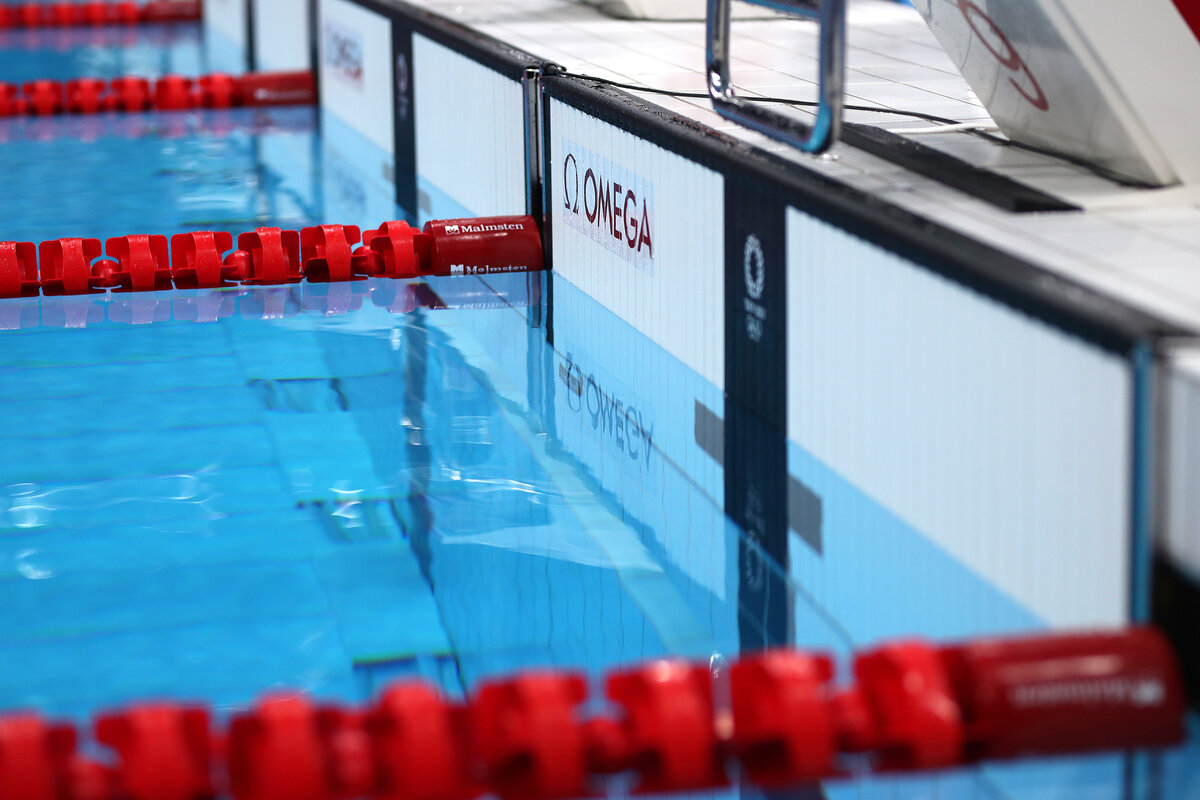
Swimming Light Show
The Swimming Light Show features lights mounted on the starting blocks at the end of the pool. When a race is over, a single large dot indicates the athlete that came first, two medium-sized dots show who came second, and three smaller dots of light confirm the third place finisher. It’s a perfect way for athletes and spectators to instantly see the outcome of a race.
Hi-Resolution Scoreboards
OMEGA’s hi-resolution scoreboards display not only text and live information, but also animations, athlete pictures, and visual imagery. Using modern effects, the winners’ names and results are boldly displayed for each event.
Motion Sensor and Positioning Systems
Across many sports, including swimming and athletics, OMEGA is using advanced technology to capture live information during events. From live speeds and positions, through to acceleration and trajectory, and even the number of strokes that a swimmer takes. The brand now has the capability of showing each event through a comprehensive range of metrics. Perfect for broadcasters, spectators, and coaches to analyse and understand every performance from start to finish.
New Technology for Paris 2024
Introducing the Scan ‘O’ Vision Ultimate
The margins have never been clearer. At Paris 2024, OMEGA is proudly introducing the next generation of its essential photofinish technology. Now enhanced with the highest resolution of any photofinish camera on the market, the Scan‘O’Vision ULTIMATE can capture up to 40,000 digital images per second on the finish line of races. This will ultimately make it faster for judges to decide the result and separate close finishes with maximum clarity. Dedicated colour sensors will also enable cleaner images, without pixel interference.
This improved version replaces the former Scan‘O’Vision MYRIA, which was able to record 10,000 digital images per second. It’s the first time that the Scan‘O’Vision ULTIMATE will be seen at the Olympic Games. Producing a composite photo of every athlete crossing the line, it will determine the official results in athletics as well as track cycling.
Computer Vision Technology at Paris 2024
Taking the next step in performance data, OMEGA will be tracking athletes and other objects throughout the events at Paris 2024 – in order to provide interesting and useful sets of metrics. Computer Vision uses a combination of single or multi-camera systems, each feeding Artificial Intelligence models that are specifically trained for each sport.
As in previous years, this live data will tell the comprehensive story of a whole event, revealing how it was won or lost, and the critical moments that led to an athlete’s final result. The information gathered by OMEGA will allow for in-depth sporting analysis, and no longer requires physical tags attached to the athletes.
The possibilities of this technology are endless. From enhanced viewing experiences for TV audiences, through to replay tools to support judgement calls, and even to generate official results. We are now seeing the Olympic Games in every detail. This is how Computer Vision will be used at Paris 2024:
In Beach Volleyball…
Athletes are no longer required to wear sensors within their uniforms. Instead, all of OMEGA’s data will be captured by high-definition cameras that are installed around the field of play. This is a serious achievement in the world of sports and offers the first glimpse of how athlete performance will be measured in the future.
Not only can the system track the exact movement of the athletes, but also the ball as it flies through the air. This will show exactly how every match played out, including the distances each player covers, the speed of the players and the ball, the unique player techniques, including jump heights, and the type of shots, from smashes to blocks and spikes.
In Diving…
A system of cameras will track the divers – from the start to their jump, to their entry into the water. At that moment, a combination of AI and mathematical algorithms will reproduce a 3D vision of the dive, with image data and calculated metrics (such as airtime and speed into the water) that will help judges to review the quality of the performance.
Along with body positions, the image data will also track the distance between the athlete and the board during a diving routine. This is known as the “safe gap”, and is the minimum distance required for each dive. If the safe gap isn’t maintained, the athlete may receive a deduction of points.
In Tennis…
By tracking the players, the rackets, and the ball in real time, Computer Vision will specifically measure the reaction time of each returned serve. How quickly can the players return the ball? What was the exact position of their racket? This data will be used to find a correlation between the final winners and their reaction times after a serve.
In Pole Vault…
For the first time at the Olympic Games, the gap between the athlete and the bar will now be automatically measured. This is the most precise way ever to see how much space was left during a successful jump.
In Gymnastics…
During floor routines, OMEGA’s multi-camera system will track the athletes and produce useful metrics for judges and TV enhancement. For example, showing whether the athlete left the allowed area marked by lines, or showing the height and airtime of a jump. Thanks to AI-based skeleton tracking, even the angles of an athlete’s feet can be detected, providing in-depth analysis during a jump rotation.
Introducing Vionardo
Next Generation Graphics Technology
The thrilling Olympic Games experience would not be the same without OMEGA’s in-depth and informative graphics. From live timing and scoring, through to final results and athlete information, these live and continuous on-screen displays are now a familiar and essential part of television viewing.
OMEGA’s role with TV graphics began at Innsbruck 1964, when the new “Omegascope” technology superimposed the times of athletes on the bottom of TV screens for the very first time. This moment introduced the concept of “real time” sports reporting and brought OMEGA’s precision to millions of viewers.
Now, 60 years later, the latest generation of OMEGA’s media graphics will arrive. The Vionardo next generation graphics technology will show graphics in 4K UHD (ultra-high definition), producing extremely clear and captivating graphics in real time.
It will offer TV graphics content in different languages according to the demand of rights-holding broadcasters from different geographical locations. Through an interactive user interface, it can be operated by Olympic Broadcaster staff members or even by volunteers. Outside of the Olympic Games, the same technology can provide Television Graphics remotely, minimizing the infrastructure footprint at competition venues and improving sustainability measures.
At the Olympic Games Paris 2024, the graphics will be deployed by OMEGA for each sport at the respective competition venues, with some systems also installed at the IBC (International Broadcast Center) for specific remote productions. From there, the graphics will be provided to the OBS (Olympic Broadcasting Services) who will send them to Media Rights holders around the world.
OMEGA Watches for Paris 2024
Seamaster Diver 300M “Paris 2024” Special Edition
In tribute to the coveted medals that every athlete strives for, this OMEGA watch is crafted in stainless steel and 18K Moonshine™ Gold. Most prominently, the gold is used for the watch’s bezel, which features a laser-structured diving scale in positive relief.
The laser-engraved dial is produced in white ceramic, with a matte finish and polished waves in positive relief. On the date display at 6 o’clock, OMEGA has cleverly used the Paris 2024 typography to inscribe the numbers in black, while the central seconds hand carries a small yet visible Paris 2024 emblem.
On the reverse side, the commemorative caseback reveals an inlayed 18K Moonshine™ Gold medallion, featuring the distinctive element of the Paris 2024 emblem, polished against a laser-ablated background. This is perfectly complemented by the stamped words “Paris 2024″ and the iconic Olympic Rings in stainless steel, which are polished on a frosted structure.
Around the wrist, the watch is worn on a stainless steel bracelet with OMEGA’s new patented Quick Change System, meaning the wearer can easily switch it for something more personal – such as a Quick Change rubber strap in either blue, white or red – or even a dedicated Paris 2024 NATO Strap.
Finally, in the spirit of athletic excellence, this Seamaster Diver 300M is completed by the highest standards of precision and performance, thanks to the Co-Axial Master Chronometer 8800, tested and certified by the Swiss Federal Institute of Metrology (METAS).
Speedmaster Chronoscope Paris 2024
OMEGA’s newest Speedmaster Chronoscope is a timepiece made for precision timing. The 43 mm design is presented in the gold, black, and white colourway of Paris 2024, and offers a sublime celebration of this summer’s sporting event.
Most notable on each watch is the silvery white opaline dial, which is printed with three dark grey timing scales in a 1940’s “snail” design. These include a tachymeter scale, a pulsometer scale, and a telemeter scale, bringing a wide range of measurements to the wrist. Other details to admire include the blackened subdials, Arabic numerals in 18K Moonshine™ Gold, and leaf-shaped hands and subdial hands that are PVD Moonshine™ Gold treated.
On the reverse side, the Speedmaster Chronoscope Paris 2024 asserts its connection to the Olympic Games with a striking commemorative caseback. The stamped medallion is crafted with a frosted base and features a mirror-polished Paris 2024 logo, along with the stamped words, “Paris 2024” and the Olympic Rings.
Choices include:
- A stainless steel version with an anodized aluminium bezel, worn on either a metal bracelet or perforated leather strap.
- An 18K Moonshine™ Gold version with a ceramic bezel, worn on either a metal bracelet or standard leather strap.
For accuracy that any athlete would be proud of, OMEGA has equipped each watch with the Co-Axial Master Chronometer Calibre 9908 / 9909, certified by METAS at the Swiss industry’s highest standard of precision, performance, and magnetic resistance.
An Eye on the Future
On the 15th of May 2017, OMEGA extended its global partnership with the International Olympic Committee (IOC) through to 2032. This important announcement means that The Games of the XXXV Olympiad in Brisbane 2032 will mark 100 years since the start of OMEGA’s relationship with the Olympic Games, which dates back to 1932 in Los Angeles.
OMEGA’s signature represented the first worldwide Olympic Games partner to commit to the Olympic Movement through to 2032. It will be the brand’s 35th time as Official Timekeeper of the Olympic Games, and you can be sure that the technology and expertise will be at the very highest level.
Until then, we have a number of exciting and historic editions to look forward to. This includes the next winter edition, which will take place in Milano Cortina 2026, and mark OMEGA’s 32nd occasion in the role of Official Timekeeper. 116 events will be contested in 8 sports, with the Olympic debut of new ski mountaineering events. Marking Italy’s 4th occasion as host country of the Olympic Games, it promises to be another edition filled with excitement and world-class culture.
Then, in 2028, it will be on to Los Angeles, where OMEGA’s Olympic Games timekeeping journey first began. This will be a meaningful and emotional return for the brand, with some very different equipment to that original year. New events that OMEGA will be timing include baseball/softball, squash, cricket, lacrosse, and flag football.
Plenty to look forward to. All in good time.



